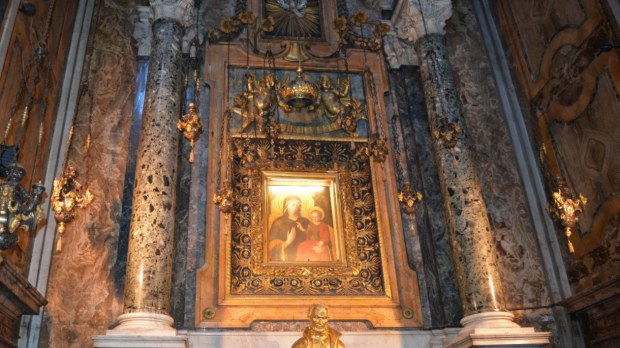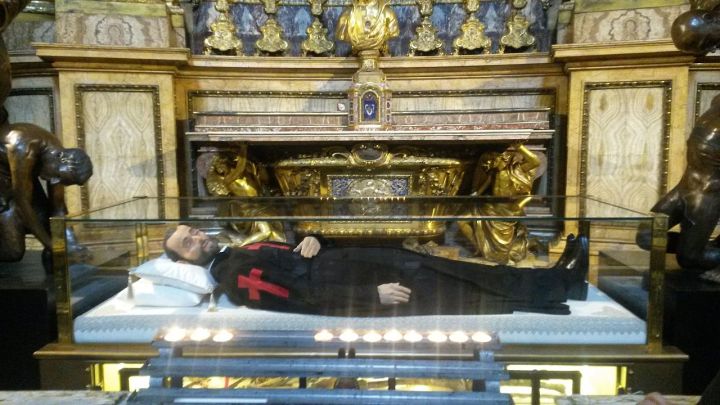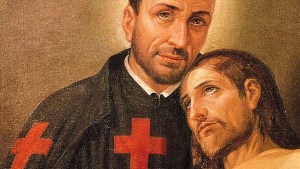The church of Santa Maria Maddalena, nestled in the Roman neighborhood of Sant’Eustachio, is famous for its curved facade. Dedicated to St. Mary Magdalene, the church is one of the few examples of Baroque-Rococo art in Rome.
The current church was built on the site of a medieval chapel dating to the 14th century. Two centuries later the chapel was entrusted to St. Camillus de Lellis, the founder of a religious order that cares for the sick.
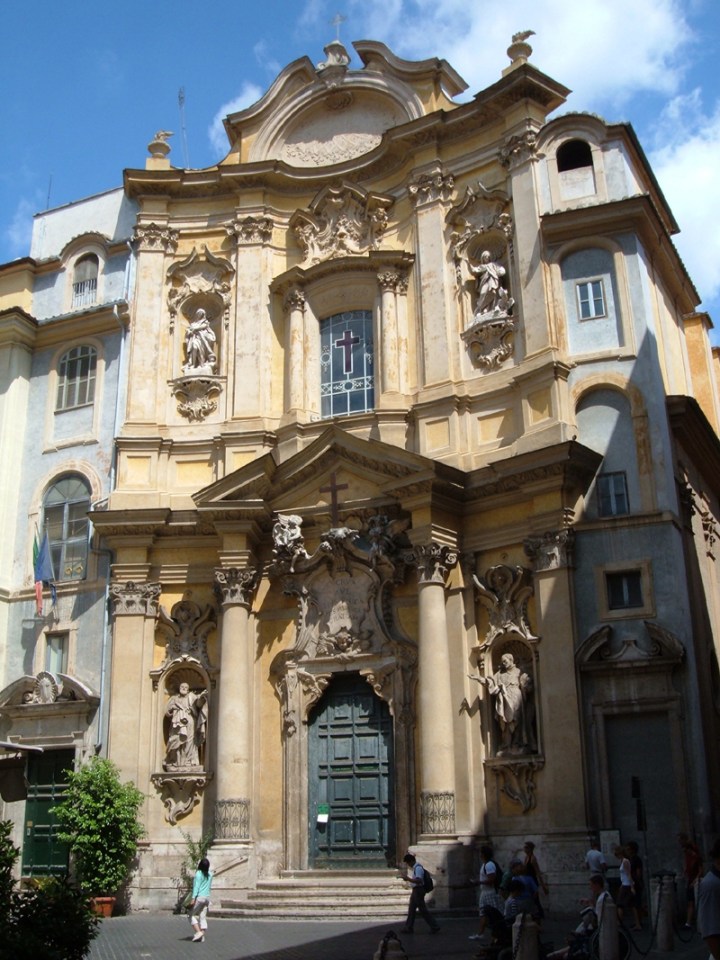
A little known gem
Its facade gave much to talk about in its time, since it was built in the Rococo style that was considered not mystical and therefore inadequate for a church.
Inside the church, pilgrims can visit four niches with the statues of: St. Mary Magdalene, St. Martha, St. Camillus and St. Philip Neri.
Over the main door is the emblem of the Camillians with the written phrase: “Hail, Cross, only hope, increase grace to the devout.”
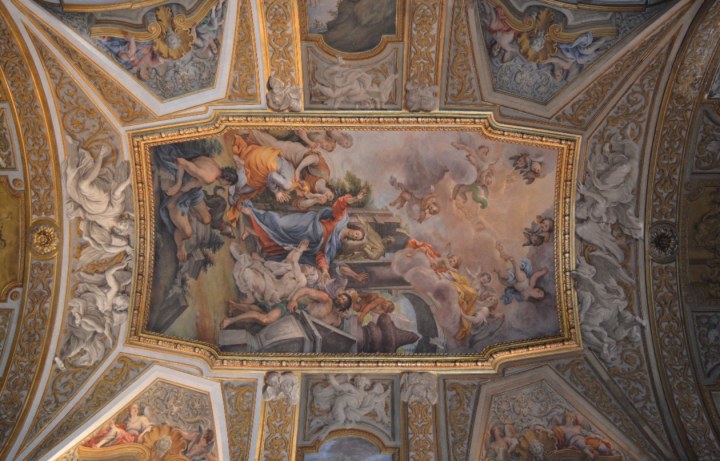
The Romans nicknamed it the “sugar church” because they said it looked like decorations on a cake.
However, this “small” church is a jewel that often goes unnoticed by tourists who pass by it on their way to see the Pantheon or Piazza Navona.
The “Treasures” of the Church
Inside, pilgrims will discover the church’s great architectural and artistic beauty. The church’s elaborate decoration includes masterpieces by important painters and sculptors. There are significant treasures of the Christian faith that lie within.
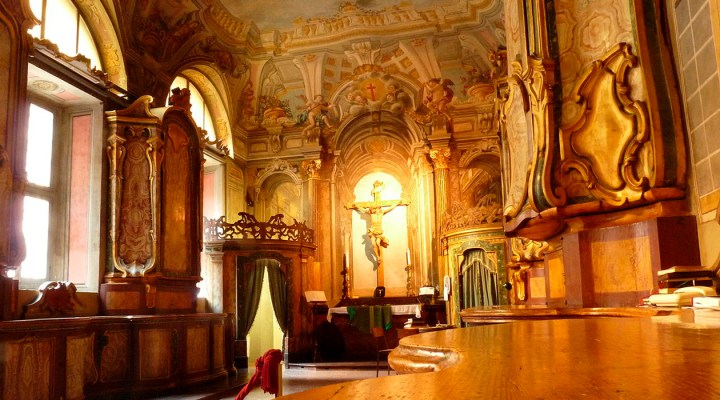
The church jealously guards the important miraculous crucifix from which Christ embraced St. Camillus in a moment of unease and told him: “Don’t be afraid, continue, because this is not your work, but mine!” Throughout his life, St. Camillus directed his prayers to the crucified Christ and entrusted the sick to him.
The second small chapel on the right preserves an image of the Virgin of Health from the 16th century that belonged to Pope Pius V.
A wooden statue representing St. Mary Magdalene, which recalls a miracle during the flood caused by the overflowing of the Tiber in 1598, is frequently venerated. The statue was seen floating upright inside the church until it stopped on the altar, a sign that was interpreted as divine.
The relics of St. Camillus
A large part of the art of the church refers to the life of St. Camillus de Lelis, and one of the chapels is reserved for his relics.
The monumental urn containing his remains was designed and built by contemporary artist Alessandro Romano and placed there on July 6, 2013, exactly one year before the fourth centenary of the saint’s death.
Until the late 1800s, Romans on the day the saint’s death was remembered went to the church to receive the special holy water containing a very small amount of powder from the saint’s tomb. This holy water was considered a remedy for any illness.
